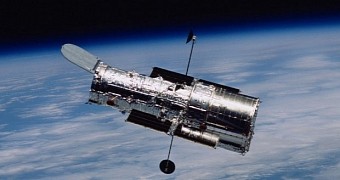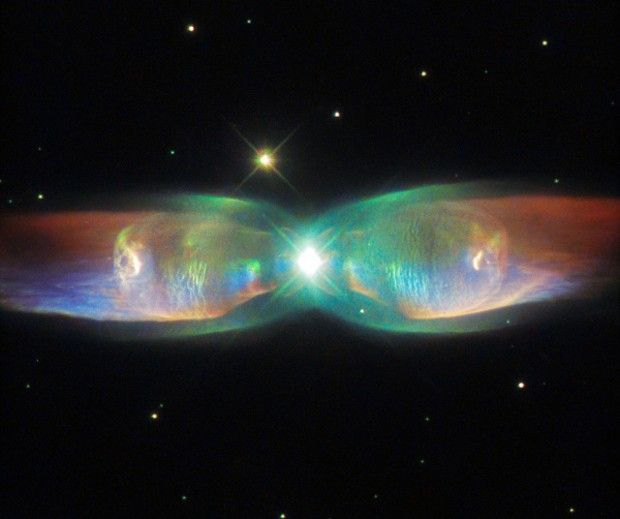The stunningly complex anatomy of the Twin Jet Nebula is revealed in a new space image delivered by the Hubble Telescope and released by ESA astronomers earlier today.
The view, available below, shows the nebula's two lobes stretching outwards from the binary system that gave rise to it. Inside these lobes there are what scientists call knots of gas.
As noted, this nebula doesn't have a single star, but a binary system at its core. Of the two orbs in the system, one is a white dwarf and the other a dying star that has ejected its outer layers.
Interestingly, both these orbs are about the same mass as our Sun, with the white dwarf estimated to hold about 0.6 to 1.0 solar masses and the dying star the equivalent of 1.0 to 1.4 solar masses.
Astronomers estimate the jets of gas coughed out by the dying star and shaping the nebula move at speeds of over 1 million kilometers (0.6 million miles) per hour.
The reason the dying star ended up creating a bipolar nebula rather than a simple, sphere-shaped one is because its companion, the white dwarf, pulled some of the ejected material and guided it into forming a butterfly-like silhouette.
“The two stars at the heart of the nebula circle one another roughly every 100 years. This rotation not only creates the wings of the butterfly and the two jets, it also allows the white dwarf to strip gas from its larger companion,” astronomers explain.
The Twin Jet Nebula, otherwise known as PN M2-9, was discovered in 1947 by a German-American astronomer by the name of Rudolph Minkowski. It formed around 1,200 years ago, which makes it quite young, and sits at a distance of about 2,100 light-years from our planet.

 14 DAY TRIAL //
14 DAY TRIAL // 

